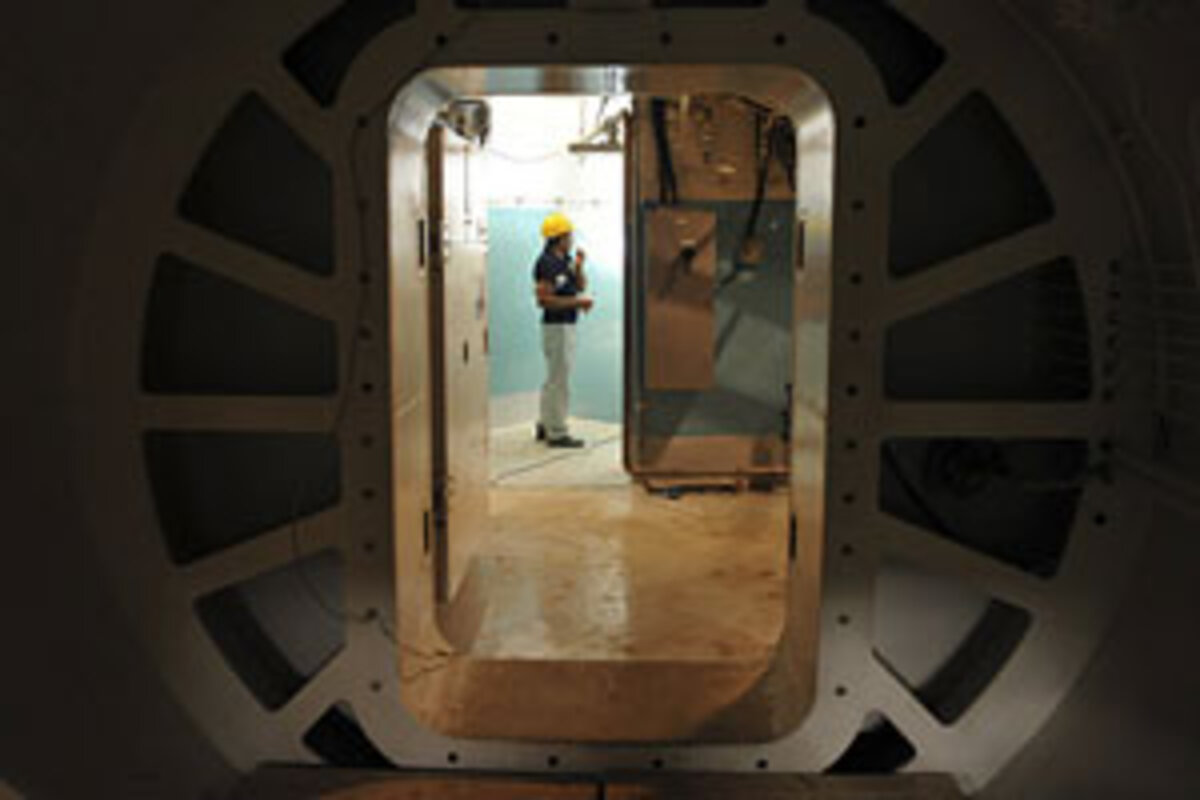Israel tested Stuxnet worm in joint effort with US to thwart Iran, says report
Loading...
| Sanaa, Yemen
• A daily summary of global reports on security issues.
In a joint Israeli-American effort to counter Iran’s nuclear ambitions, a cyber worm tested at a secret facility in Israel’s Negev desert wiped out about a fifth of Iran’s nuclear centrifuges, The New York Times yesterday.
The Monitor reported earlier this month that the Stuxnet cyber weapon may have destroyed as many as 1,000 Iranian nuclear-fuel centrifuges in late 2009 and early 2010. By Feb. 18, 2010, quarterly reports issued by IAEA inspectors highlighted that there might be problems in centrifuge installation at Iran’s Natanz plant.
However, what was unknown prior to the Times report was who might be behind the computer-based attack.
The Times report illuminates the role of Israel’s nuclear arms complex Dimona, the London-based newspaper The Guardian. At Dimona, the Israelis, with support from the United States, are reported to have been spinning nuclear centrifuges extremely similar to those used at Natanz in Iran.
“To check out the worm, you have to know the machines,” the Times quoted an American expert on nuclear intelligence as saying. “The reason the worm has been effective is that the Israelis tried it out.”
On the eve of his retirement Meir Dagan, head of the Mossad, the Israeli intelligence agency, gave a summary to the Knesset Foreign Affairs and Defense Committee saying that Iran was far from developing the ability to produce nuclear weapons after a string of failures set its nuclear ambitions back by several years, the Israeli newspaper earlier this month.
“Dagan concluded his term saying Iran was still far from being capable of producing nuclear weapons and that a series of malfunctions had put off its nuclear goal for several years. Therefore, he said, Iran will not get hold of the bomb before 2015 approximately,” said the Haartez report.
The destruction caused by the Stuxnet worm makes military action against Iran less likely, according to several analysts.
In January 2009, that in an apparent effort to avert such military action, President George W. Bush authorized a covert program to undermine the electrical and computer systems around Natanz.
"President Bush deflected a secret request by Israel last year [2008] for specialized bunker-busting bombs it wanted for an attack on Iran’s main nuclear complex and told the Israelis that he had authorized new covert action intended to sabotage Iran’s suspected effort to develop nuclear weapons, according to senior American and foreign officials."
The Guardian Avner Cohen, Washington-based author of "Israel and the Bomb" and "The Worst-Kept Secret: Israel's Bargain with the Bomb," as saying:
"In the short term, it surely makes military action less likely. In fact, I do not see any military action against Iran anytime soon. It takes the pressure off. It does not mean military action is off the table, but it is not a short-term concern."
"For the long run, while it is impossible to predict, my gut feeling is that Iran will not have the full bomb. The only thing that would push Iran to the bomb would be an attack on Iran. I think Iran would ultimately emerge smart enough to avoid confrontation with the world but would insist to keep themselves very close to the bomb, still within the NPT (Non-Proliferation Treaty) claiming the right to a fuel cycle. Whether the west and Israel would be able to live with that, I don't know."
According to the recent Monitor report, Stuxnet works by targeting industrial control systems with certain specific brands of frequency converters – a type of equipment that controls centrifuge motors and rotational speed. The worm subverts the original speed requirements, ordering the converters to drastically increase – and then drastically reduce – the speed of the centrifuges in a subtle way intended to ruin or greatly impede output from those centrifuges.
"If its goal was to quickly destroy all the centrifuges ... Stuxnet failed," the Monitor quoted an Institute for Science and International Security (ISIS) report. "But if the goal was to destroy a more limited number of centrifuges and set back Iran’s progress in operating the [enrichment facility] while making detection difficult, it may have succeeded, at least temporarily."





